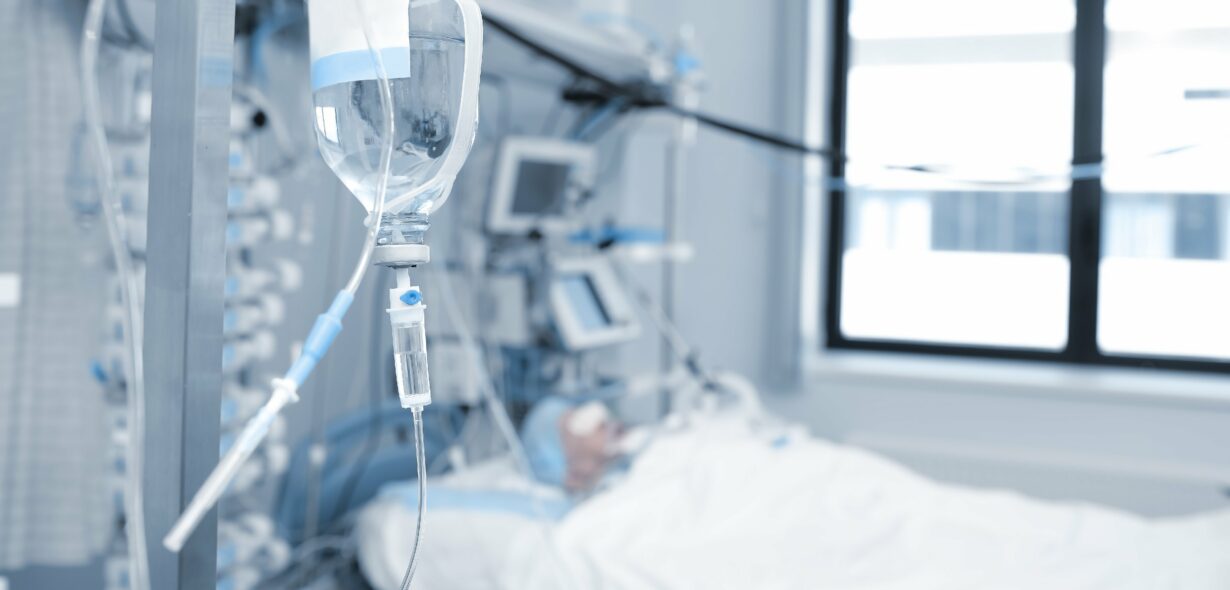KRINKO Recommendation: Hand Hygiene in Healthcare Facilities
In 2016, the Commission for Hospital Hygiene and Infectious Disease Prevention (KRINKO) at the Robert Koch-Institute (RKI) updated... read more

Impaired immune defences, invasive procedures and low compliance to infection prevention measures favour the transmission of pathogens in intensive care units (ICUs). The implementation of surveillance systems helps in identifying possible problems and developing solutions for improving hygiene practice in ICUs.
Every time medical staff performs much-needed invasive procedures on patients in intensive care units (ICUs), doctors or nurses bear in mind that their actions could open the doors for microbes to enter the patient’s body and cause harmful infections. In fact, many patients in ICUs will not survive their stay, or will not get back to their previous functional status because of healthcare-associated infections (HAIs). HAIs are localised or systemic conditions resulting from an adverse reaction to the presence of an infectious agent(s) or its toxin(s) and can be caused by infectious agents from endogenous or exogenous sources1. According to data from the European Centre for Disease Prevention and Control (ECDC), eight percent of patients staying in an ICU for more than two days developed at least one HAI in 20142. In low-and middle-income countries, the scale of the problem is even larger, as the frequency of HAIs is at least two- to threefold higher than in high-income countries3.

“Patients in ICUs are at high risk of contracting HAIs for three main reasons,” explains Prof. Dr Petra Gastmeier, head of the Institute of Hygiene and Environmental Medicine at the Charité university hospital in Berlin and an expert on surveillance of nosocomial infections.
“First, patients in ICUs usually have several catheters, for example, central venous catheters, bladder catheters and endotracheal tubes. Pathogens can move along these entry portals and access the body. Second, these patients are critically ill and (are) often subjected to diagnostic, therapeutic or nursing care measures. Such procedures increase the risk of pathogen transmission from one patient to the next. Third, the immune defence mechanisms of ICU patients are impaired by the underlying diseases or through ongoing therapies such as chemotherapy or antibiotic treatment.
These treatments often disrupt the microbiome of the gastrointestinal tract, favouring the passage of bacteria from the intestine to the blood and the development of a sepsis.” All three risk factors are relatively common in ICUs and can be only influenced to a limited extent. Although good hand hygiene can prevent the transmission of pathogens from one patient to another, invasive procedures, the use of catheters, as well as the breach of the intestinal barrier, are often unavoidable. The most common HAI in ICUs are pneumonia (6%), bloodstream infections (4%) and urinary tract infections (3%)1. The great majority of pneumonia cases and urinary tract infections are associated with intubation and the use of urinary catheters, respectively. Bloodstream infections are either catheter-related or secondary to other infections, including pulmonary, gastrointestinal, urinary or surgical site infections. One-fifth of bloodstream infections remain of unknown origin. In surgical ICUs, surgical site infections are among the most common HAIs 4. HAI are often caused by antibiotic-resistant bacteria such as Staphylococcus aureus, Pseudomonas aeruginosa, Escherichia coli and Klebsiella spp., which increase the risk of severe complications and lethal courses.
Compliance to infection prevention measures such as hand hygiene remains crucial for preventing the transmission of pathogens from patient to patient. Transmission of pathogens from the staff to patients is not so common (Gastmeier P et al, 2005)5. However, when the staff’s hands are contaminated during handling of patients, the pathogens are then transferred to the next patient when hand hygiene measures are not performed correctly. “Patients in ICUs are often unconscious or severely ill and cannot be compliant,” remarks Gastmeier. “This is why compliance by healthcare professionals is essential. In most ICUs, compliance rates have risen to between 60 percent and 80 percent in recent years. This greatly contributes to preventing transmission of infection. But there are still discrepancies among ICUs. In order to further reduce infection incidence, the implementation of surveillance systems is a key step.”
The first clinical investigations to show the positive influence of surveillance actions on the incidence of HAIs were conducted in the 1980s (Morrison AJ Jr et al., 1987)6. Since then, many countries have implemented local surveillance systems and several studies have confirmed a decrease in HAI occurrence shortly after the introduction of such systems. The Krankenhaus-Infektions-Surveillance-System (KISS) in Germany is the biggest surveillance system in Europe and has a module dedicated to intensive care units (ITS-KISS)7. This allows researchers to collect data about both the infections and the pathogens causing them. In addition, ITS-KISS enables the surveillance of patients with multi-resistant pathogens and Clostridioides difficile-associated diarrhoea (Schröder C et al., 2015)8. “Surveillance systems are especially important for quality assurance,” explains Gastmeier. “At the moment, there are more than 1,000 ICUs communicating their data to the national reference center. Healthcare professionals can then observe the incidence of HAIs over time in their unit or compare their data to those of other ICUs with similar patients. It is essential for ICUs to deal with the infection data and to then intervene in a targeted manner.”

ICUs participate in the KISS on a voluntary basis. However, hospitals are required to implement vigilance measures for HAIs. Many countries in Europe began introducing surveillance systems in the 1990s and have developed them in the past 20 years. Data from Germany and other EU member countries are collected in Stockholm at the ECDC, which also coordinates point prevalence surveys9 of HAI and antimicrobial use in intensive care units and provides support to member countries. “In the past 20 years, we have shown that surveillance systems lead to a significant reduction of infection rates,” says Gastmeier. “Healthcare professionals can look carefully at HAI incidences in their hospital and plan their interventions accordingly.” A recent study observed the incidence of HAIs in more than 60,000 patients in Germany. The authors were able to demonstrate a significant reduction in severe HAIs in ICUs following the introduction of an infection control programme (Hagel S et al., 2018)10.
As more and more hospitals are implementing or improving vigilance activities, ongoing cooperation between clinicians and infection control specialists is crucial. This collaboration also needs to be regularly evaluated and updated. “Digitalisation could also help to optimise surveillance systems,” remarks Gastmeier. “The automation of data collection would considerably simplify workflows and reduce the amount of work needed to record infection rates.”
further information